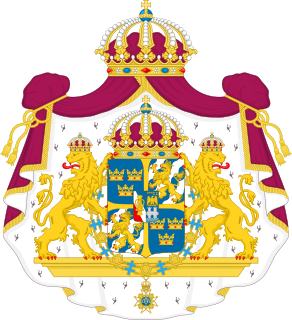 W
WSwedish heraldry encompasses heraldic achievements in modern and historic Sweden. Swedish heraldic style is consistent with the German-Nordic heraldic tradition, noted for its multiple helmets and crests which are treated as inseparable from the shield, its repetition of colours and charges between the shield and the crest, and its scant use of heraldic furs. Because the medieval history of the Nordic countries was so closely related, their heraldic individuality developed rather late. Swedish and Finnish heraldry have a shared history prior to the Diet of Porvoo in 1809; these, together with Danish heraldry, were heavily influenced by German heraldry. Unlike the highly stylized and macaronic language of English blazon, Swedish heraldry is described in plain language, using only Swedish terminology.
 W
WJonas Henry Arnell-Szurkos, previously Arnell, born February 28, 1969 in Örebro, Sweden is a Swedish phaleristician. Since 2018 he is Amanuensis at the Chancery of the Swedish Royal Orders of Knighthood.
 W
WThe coat of arms of the Kingdom of Sweden has a greater and a lesser version.
 W
WKing of the Wends was a pan-Scandinavian title denoting sovereignty, lordship or claims over the Wends, a people who historically populated Western Slavic lands of southern coasts of the Baltic Sea, those otherwise called Mecklenburg, Holstein and Pomerania, and was used from the 12th century to 1972 by Kings of Denmark and from c. 1540 to 1973 by the Kings of Sweden.
 W
WThe National Archives of Sweden is the official archive of the Swedish government and is responsible for the management of records from Sweden's public authorities. Although the archives functions primarily as the government archive, it also preserves some documents from private individuals and non-public organizations. The mission of the archives is to collect and preserve records for future generations.
 W
WRiddarholmen Church is the church of a former medieval abbey in Stockholm, Sweden. The church serves as the final resting place of most Swedish monarchs.
 W
WSmåland is a province of Sweden and at the funeral of Gustav Vasa in 1560 the province was granted its arms. Today there are also county arms that are based on the arms of Småland.
 W
WThree Crowns is the national emblem of Sweden, present in the coat of arms of Sweden, and composed of three yellow or gilded coronets ordered two above and one below, placed on a blue background.